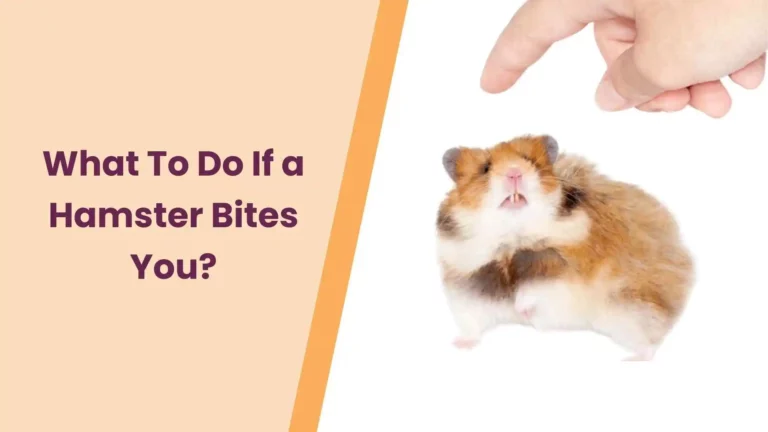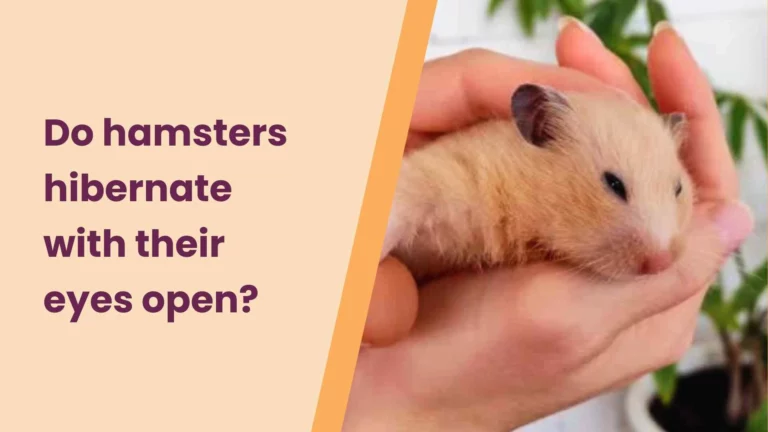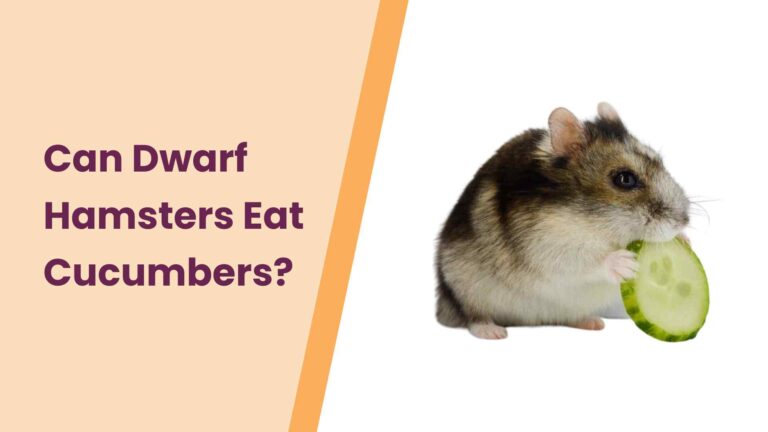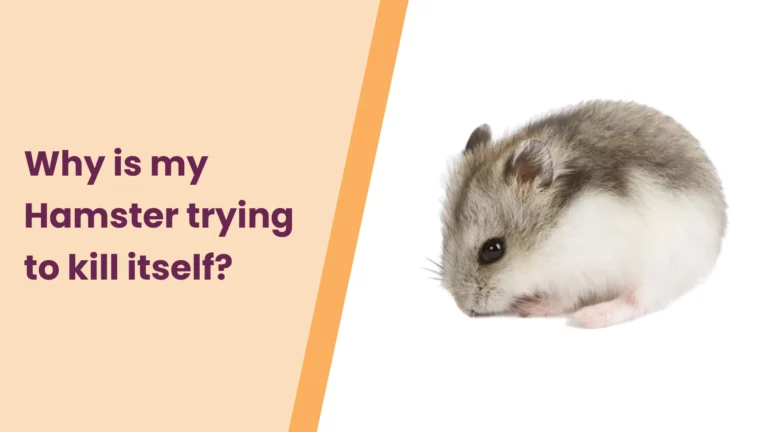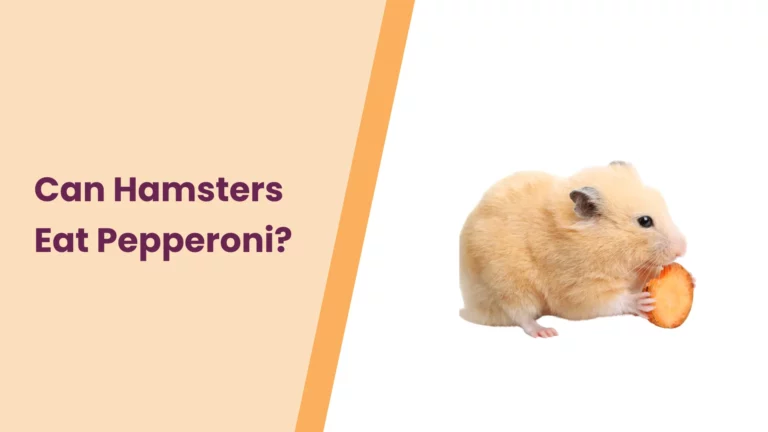Can Hamsters Eat Honey? – All You Need To Know
Welcome, fellow hamster enthusiasts! If you’ve ever found yourself pondering the possibilities of treating your furry friend to a dollop of honey, you’re not alone. As devoted pet owners, we often find joy in pampering our hamsters with occasional delights.
But the pressing question remains: Can hamsters have honey? In this buzzing exploration, we delve into the nectarous world of honey, unraveling its nutritional secrets, and navigating the delicate balance between indulgence and health for our beloved whiskered companions.
So, sit back, relax, and let’s uncover whether our hamsters can join us in savoring the sweetness of honey or if it’s a treat best kept for human taste buds.
Overview of Hamster Diet
Hamsters, those pint-sized bundles of fur and energy, have dietary needs as unique as their personalities. In the wild, these pocket-sized explorers are foragers, feasting on a diverse array of seeds, grains, insects, and even the occasional bit of vegetation. Replicating this balanced diet in captivity is paramount to ensure our fluffy friends lead happy and healthy lives.
But what exactly constitutes a hamster’s daily menu?
High-Quality Pellets: Start with a foundation of high-quality hamster pellets. These specially formulated nuggets are designed to provide essential nutrients and ensure a well-rounded diet.
Fresh Hay: Like many rodents, hamsters benefit from the inclusion of fresh hay in their diet. Not only does it aid in digestion, but it also supports dental health, preventing those ever-growing incisors from turning into a dental dilemma.
Fresh Water: Hydration is key! Ensure your hamster has constant access to fresh, clean water. It might seem basic, but it’s a fundamental pillar of their well-being.
Occasional Fresh Fruits and Vegetables: Introduce a colorful medley of hamster-friendly fruits and veggies. Carrots, apples, and broccoli are often met with enthusiastic nibbles. Remember, moderation is the golden rule.
Protein-Rich Treats: Hamsters also benefit from the occasional protein boost. Insects, mealworms, and small bits of cooked egg can be a delightful addition to their diet.
Balancing these elements is the key to a content and healthy hamster. Just like us, they thrive on variety and moderation. Now, as we explore the tantalizing prospect of honey in their diet, let’s keep in mind the delicate equilibrium that defines their nutritional needs. After all, a happy hamster is a well-fed hamster!
Nutritional Content of Honey
Before we delve into whether our tiny companions can share in the delight of honey, let’s first explore the nutritional treasure trove that this sweet elixir holds.
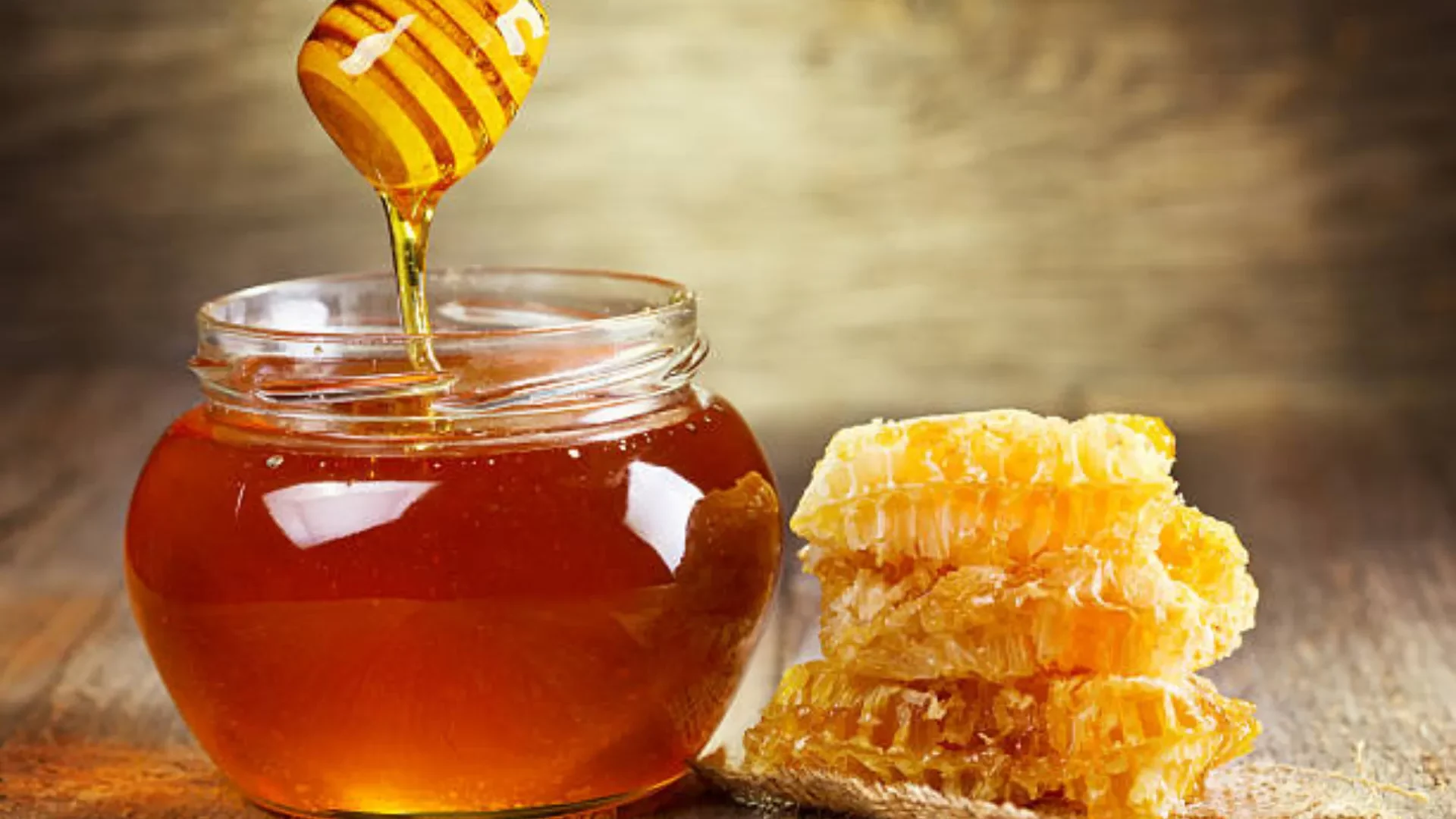
Honey, often hailed as nature’s liquid gold, is not only a delectable treat for humans but also boasts a range of nutritional components that make it unique.
Natural Sugars: Honey’s primary sweetening agents are natural sugars, predominantly fructose and glucose. These sugars provide a quick energy boost, making honey a favorite among those seeking a natural pick-me-up.
Antioxidants: Rich in antioxidants, honey offers a potential defense against oxidative stress. These compounds contribute to overall well-being and have been associated with various health benefits in humans.
Vitamins and Minerals: While not present in staggering amounts, honey contains trace amounts of vitamins and minerals, including B-vitamins, iron, and manganese. These contribute, albeit modestly, to the nutritional profile of this golden syrup.
Antimicrobial Properties: Honey has been lauded for its antimicrobial and antibacterial properties. Its use in traditional medicine spans centuries, with some cultures applying honey to wounds for its potential healing properties.
Soothing Qualities: Beyond its nutritional components, honey is known for its soothing qualities. Many turn to honey-infused concoctions to ease sore throats and coughs.
It’s essential to keep in mind that the nutritional needs of hamsters differ from those of humans. While honey might be a sweet symphony for our taste buds, let’s unravel whether it harmonizes with the unique dietary requirements of our pint-sized pals. Join us on this journey as we navigate the intersection of sweetness and hamster health!
Can Hamsters Eat Honey?
Now, the moment of truth – can our furry companions indulge in the golden goodness that is honey? Well considering the high sugar content in honey, it’s better to keep your hamsters away from honey! That being said, it is still okay if you decide to give honey to your hamster as an extremely occasional treat. Now let’s dive into the intricacies –
Sugar Content: Hamsters have a penchant for sweets, but their small size and unique metabolism necessitate caution. Honey, being rich in natural sugars, may pose a risk if consumed in excess. The high sugar content could potentially lead to weight issues, diabetes, or digestive complications in these pint-sized creatures.
Digestive Sensitivity: Hamsters are known for their sensitive digestive systems. Introducing a new food, especially one as rich as honey, may trigger digestive upset or diarrhea. Monitoring their reaction to this sweet addition is crucial to ensuring their well-being.
Nutritional Balance: While honey brings its own set of benefits for humans, hamsters require a meticulously balanced diet. If honey is introduced, it should be considered as an occasional treat rather than a staple. Balancing their diet is paramount to prevent nutritional imbalances that could impact their health.
Potential Benefits: On the flip side, some hamster owners report offering tiny amounts of honey as an occasional treat without apparent issues. The potential benefits may include a dash of extra energy and the joy derived from the novel flavor.
As we navigate this sweet dilemma, it’s imperative to approach the introduction of honey into your hamster’s diet with caution and mindfulness. Moderation is key, and observation is your best ally. Join us in the next section as we uncover the potential risks and considerations associated with treating our hamster friends to the sweet wonders of honey. After all, their well-being is our top priority on this flavorful journey!
Risks and Considerations
As we tread the path of introducing honey to our hamster’s menu, it’s crucial to be aware of potential risks and considerations that may arise. While the idea of treating our tiny friends to a dollop of honey is enticing, it’s essential to weigh the risks against the rewards.
Sugar Overload: One of the primary concerns is the sugar content in honey. Hamsters, with their diminutive size, are particularly susceptible to the adverse effects of excessive sugar consumption. Overindulgence can lead to weight gain, diabetes, and other health issues.
Digestive Sensitivity: Hamsters boast delicate digestive systems, and introducing new foods, especially those rich in sugars, can upset the delicate balance. Diarrhea, gastrointestinal discomfort, or other digestive issues may ensue if honey is not introduced with caution.
Potential Allergies: Just like humans, hamsters can have allergies. While rare, it’s possible for a hamster to be allergic to components in honey. Watch for signs of allergic reactions, such as itching, swelling, or respiratory distress, and consult a vet if such symptoms arise.
Caloric Concerns: Honey is calorie-dense, and excessive caloric intake can contribute to obesity in hamsters. Maintaining a healthy weight is crucial for their overall well-being.
Balancing Act: Honey, while a delightful addition, should not replace the staple components of a hamster’s diet. Ensuring a well-balanced intake of pellets, fresh hay, and appropriate treats is essential to meeting their nutritional needs.
Navigating the Sweet Path Safely:
Understanding these risks empowers us to make informed decisions regarding our hamster’s diet. Moderation is the linchpin, and observation is key. Keep a watchful eye on your hamster’s behavior and health when introducing honey, and be prepared to adjust their diet accordingly.
Moderation and Frequency
Ah, the sweet allure of honey – a treat that beckons both humans and our pint-sized pals. While the golden elixir may hold a place in their menu, the key lies in the delicate dance of moderation and frequency.
Tiny Tastes, Big Joy: Consider offering honey as a rare indulgence rather than a daily delight. A small taste can bring moments of joy without tipping the scales on their nutritional balance.
Portion Control: When introducing honey, think in teaspoons, not tablespoons. A little goes a long way, especially for these pocket-sized adventurers. Overindulgence can lead to health issues, so err on the side of caution.
Frequency Matters: Limit the frequency of honey treats to ensure it remains a special occasion. Whether it’s a monthly treat or a sporadic surprise, moderation ensures that their overall diet remains balanced.
Observe and Adjust: Every hamster is unique, and their tolerance to treats varies. Keep a close eye on your hamster’s reaction to honey. If there are signs of digestive upset, weight gain, or any adverse effects, adjust the frequency or eliminate honey from their diet.
The Balancing Act:
Remember, the sweetness of honey should complement, not overshadow, the nutritional foundation of your hamster’s diet. Pellets, fresh hay, and water are the pillars of their well-being. Treats, including honey, should adorn the menu sparingly, adding a sprinkle of delight without compromising their health.
As we savor the sweet moments with our hamsters, let’s embrace the art of balance. In the next section, we explore delectable alternatives to honey, ensuring our tiny companions have a palette of flavors while maintaining the equilibrium of their dietary needs. Join us in the quest for the perfect balance of sweetness in the hamster haven!
Alternatives to Honey
While the question of honey lingers on our taste buds, there are alternative treats that can bring joy to our hamster companions without delving into the world of sticky sweetness. Here, we explore a palette of delightful alternatives that harmonize with their unique dietary needs.
Fruits of the Earth: Fresh fruits are a fantastic alternative to honey. Offer small portions of hamster-friendly fruits like apples, pears, and berries. These not only add a burst of flavor but also contribute essential vitamins to their diet.
Vegetable Medley: Vegetables are another excellent choice. Carrots, broccoli, and cucumber slices provide a crunchy and hydrating experience. Just be mindful of the types and amounts, ensuring they align with your hamster’s nutritional needs.
Nutty Delights: Nuts and seeds are a favorite among hamsters. Walnuts, sunflower seeds, and pumpkin seeds offer not only a tasty treat but also a source of healthy fats and proteins.
Yogurt Drops: Hamster-friendly yogurt drops are designed for these small creatures. These treats often come in various flavors, adding a dash of excitement to their snack time.
Mealworm Morsels: If you’re looking to incorporate protein, mealworms are a protein-rich alternative. These crunchy critters can be an exciting addition to their diet.
The Art of Variety:
Variety is the spice of a hamster’s life, and these alternatives not only satisfy their taste buds but also contribute to a well-rounded diet. Remember, moderation is key even when offering these delightful alternatives. Rotating treats and ensuring a diverse range keeps their diet interesting and nutritionally balanced.
As we explore the rich tapestry of hamster treats, let’s embrace the joy that comes from offering our tiny friends an array of flavors. In the next section, we delve into the nuances of recognizing signs of allergies or discomfort in hamsters, ensuring that our gestures of love through treats are met with wagging tails and whisker twitches. Join us on this journey of culinary exploration for our cherished companions!
Signs of Allergies or Discomfort
Our hamster companions may not speak our language, but they communicate volumes through subtle cues. As we introduce treats, including honey or alternatives, it’s crucial to become adept at interpreting the language of whiskers and paws. Here’s a guide to recognizing signs of allergies or discomfort in our pint-sized pals.
Behavioral Changes: Pay close attention to changes in behavior. If your hamster becomes lethargic, agitated, or unusually withdrawn after trying a new treat, it might be a sign of discomfort.
Gastrointestinal Distress: Watch for signs of gastrointestinal distress, including diarrhea, constipation, or changes in the frequency of their bathroom habits. An upset tummy may be a signal that a particular treat isn’t sitting well.
Scratching or Itching: Excessive scratching, itching, or fur loss may indicate an allergic reaction. While hamsters may occasionally scratch, persistent discomfort should raise concerns.
Respiratory Changes: Labored breathing, wheezing, or sneezing could be signs of respiratory distress. If these symptoms appear after introducing a new treat, it’s advisable to consult with a veterinarian.
Swelling or Redness: Observe any signs of swelling or redness, especially around the face, paws, or hindquarters. These could be indicative of an allergic response.
A Bond of Understanding:
Building a strong bond with your hamster involves more than just sharing treats. It’s about recognizing their unique responses and ensuring that every addition to their menu aligns with their well-being. As responsible pet owners, staying vigilant to signs of allergies or discomfort ensures that our gestures of love through treats are met with joy rather than distress.
We seek expert opinions to enrich our understanding of hamsters and their dietary needs. By combining the wisdom of seasoned professionals with our firsthand observations, we can navigate the culinary landscape for our tiny friends with confidence and care. Join us in the quest for a hamster’s culinary bliss!
Expert Opinions
In our quest to provide the best care for our hamster companions, it’s invaluable to seek the wisdom of those who dedicate their lives to understanding the intricacies of small, furry friends. Let’s tap into the reservoir of expert opinions to glean insights into the nuanced world of hamster nutrition.
Veterinary Perspectives: Veterinarians specializing in exotic pets and small mammals can offer tailored advice on hamster diets. Reach out to your local veterinary clinic or exotic pet experts to gather insights into whether honey or certain treats align with your hamster’s health needs.
Small Animal Nutritionists: Consultations with small animal nutritionists can provide a deeper understanding of the specific nutritional requirements of hamsters. These experts can offer recommendations on treat choices, ensuring a balance that enhances rather than hinders their well-being.
Experienced Hamster Owners: Sometimes, the best advice comes from those who’ve walked the path before. Engage with experienced hamster owners through online forums or social media groups. Share your experiences, ask questions, and learn from the collective wisdom of a hamster-loving community.
Reputable Pet Care Resources: Trusted pet care resources, whether in print or online, often feature articles and guides on hamster nutrition. Explore reputable sources such as books, articles, and websites authored by experts in the field to broaden your understanding.
Expert opinions serve as the conductor in the symphony of hamster care. By harmonizing professional advice with our firsthand experiences and observations, we create a melody that resonates with the well-being of our tiny companions.
Join us as we distill the essence of a balanced hamster diet, enriched by the sweet notes of occasional treats. Your hamster’s journey to culinary delight awaits its final crescendo!
Conclusion
In the delightful world of hamster care, the question of whether these tiny wonders can enjoy honey has led us on a journey of exploration. Balancing the sweetness of treats with the nutritional needs of our furry companions is an art we’ve unraveled together. Remember, moderation is the key to a happy and healthy hamster.
As we conclude this culinary quest, let’s cherish the moments of joy we share with our hamsters. Whether it’s the occasional sweetness of honey or the crunchy delight of fresh vegetables, every treat is an expression of love.
Expert insights and attentive observation guide us on this path, ensuring a symphony of care that resonates with the well-being of our cherished companions. Here’s to the sweet harmony of hamster happiness, where every nibble is a note in the song of our shared journey.
“Embark on this adventure with us by sharing your thoughts, questions, and experiences in the comments below. Have you treated your hamster to a honey delight, or do you have insights to add to our exploration?
Your unique stories enrich our community, creating a tapestry of shared knowledge and love for these small, endearing creatures. Don’t forget to spread the joy beyond these pages—share this blog on your favorite platforms, inviting fellow hamster enthusiasts to join our conversation.
Together, we craft a space where every hamster tale finds a home, and every query becomes an opportunity for shared learning. Let’s connect, celebrate, and learn from one another on this journey of hamster care.” – Hamsterpit.


